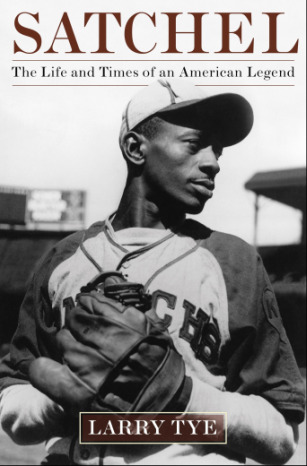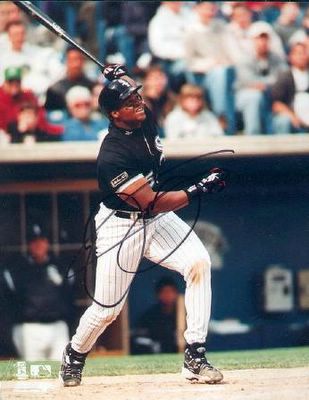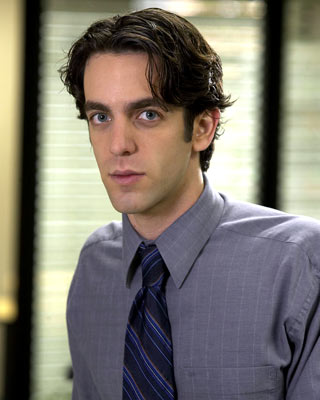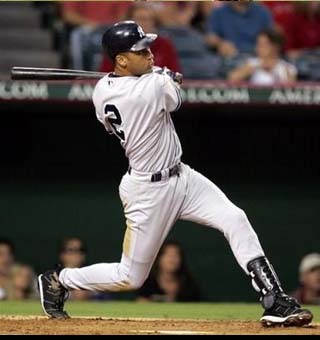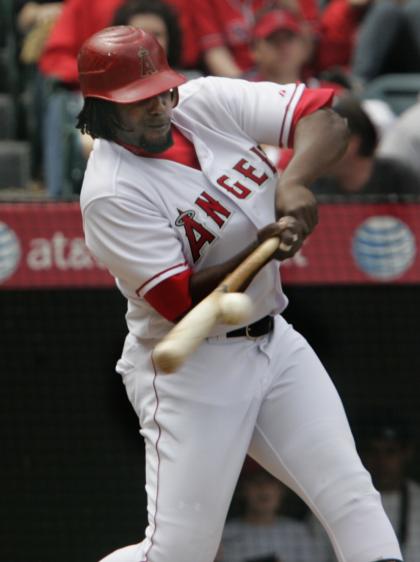A year ago I looked at the top 20 prospects from Baseball America's annual Top-100 list, so I figured that now would be a good time, with Spring Training beginning, to do a similar thing.
I'll break it up into four posts this time. here are prospects #1 through #5:
#1. Jason Heyward, OF, Braves
Opening Day Age: 20
ETA: 2010
Nobody doesn't like Jason Heyward. He's the #1 position player prospect on everybody's list, and with good reason, as there seem to be no weaknesses to his game. Scouts like his tools and his athleticism. Stats geeks like his ability to take walks, hit for power without striking out a ton, and steal bases without getting caught. braves fans like him because, frankly, their outfield has been kind of a drag since Andruw Jones was in his heyday. Everybody else's fans may not like him, but have to concede his talents.
He's hit for average and for power, with patience, at every professional level where he's been tried, with a composite .318/.391/.508 line across five levels (mostly single and double A). He doesn't steal a ton of bases, but when he attempts one, he's usually successful (26 for 31).
He's played mostly right field in the minors, where his cannon arm has racked up 22 assists in only 190 games, but he's reportedly got the speed to play center if needed, too. If there's a chink in his armor - and really, it's just a scratch, at worst - it's simply his youth and inexperience, as he has only 3 official games above AA, though he also hit .300/.364/.475 in 24 spring training games last year, for what they're worth.
Expectations are that the Braves will give him every shot to win a job as their everyday right fielder right out of spring training, but even if they send him back to AAA for a while, he'll probably be back up to stay by the end of May. This guys gonna be a lot of fun to watch. I'm glad he's not in the Yankees' division.
#2. Stephen Strasburg, RHP, Nationals
Opening Day Age: 21
ETA: Mid-2010
Speaking of fun-to-watch-prospects-not-in-the-AL East...
Strasburg is quite possibly the most hyped prospect in a very, very long time, perhaps ever. In baseball circles, he's already a household name in spite of the fact that he has yet to throw an inning of pro ball. Well, he tossed 19 innings in the AFL, amassing 23 strikeouts and a 4-1 record despite a 4.26 ERA, inflated by one bad outing (of five). That's not exactly top notch competition, but the AFL is known for the high level of offense, and Strasburg generally acquitted himself well there.
The man has a perfect pitcher's build (6'4", 220 lbs), good mechanics, a 100-mph fastball that he throws regularly with pinpoint control at 95-98 mph, a knee buckling curve and an above average change-up, despite being only 21. He has no chinks in his armor. The only things than can stop him now are some form of Steve Blass Disease, or an injury. And those are no small things, as there have been countless "can't miss" prospects who somehow did, simply because they couldn't stay healthy or forgot how to pitch.
#3. Mike Stanton, OF, Marlins
Opening Day Age: 20
ETA: Mid-2010
I remain unconvinced on Mike Stanton as an uber-prospect. After mashing up the Sally League as an 18 year old in 2008, he was promoted to High A Jupiter in the Florida State League, and maintained most of his rate stats in 50 games there. In fact he was named an FSL All-Star and was leasing the League in homers when he got promoted to AA Jacksonville.
Here is where he kind of fell apart.
Sure, the power is still there - his .224 Isolated Power was exactly the same number David Ortiz had last year in the majors - but he hit only .231 and struck out in a third of his at-bats. he did hit well in the Arizona Fall League, but in only six games before being shut down with a sore back.
He's still only 20, but he'll have to learn to hit the kind of breaking stuff they throw in AA and AAA before he can even get to the majors, much less be an effective major leaguer. I expect that the Marlins will start him in AA again and advance him quickly if he seems to have made the necessary adjustments.
I still think his closest comparison is Russel Branyan, and you could certainly do worse, but when everyone expects Reggie Jackson or Dave Winfield and they get stuck with Branyan, well, folks will be disappointed.
I think Baseball America's ETA of mid-2010 is a bit ambitious, given that he needs to master not one but two minor league levels before he would get called up, and that the Marlins have a perfectly acceptable (and relatively young) outfield trio of Cody Ross, Chris Coughlin and Cameron Maybin. September is more likely, if that.
#4. Jesus Montero, C, Yankees
Opening Day Age: 20
ETA: 2011
Montero, like Stanton, was born in November of 1989, though a few weeks later than Stanton. And like Stanton he was tearing up the FSL last year, though he got promoted to AA too soon to take his rightful place on the All-Star team. Unlike Stanton, however, he did not falter at the higher level, hitting a robust .317/.370/.539 in 44 games in the Eastern League, a total decreased by the broken finger he sustained in . Kevin Goldstein of Baseball Prospectus reports that Montero hit an astounding .400/.457/.718 away from Trenton, which is evidently a severe pitcher's park. So, you know, that's pretty good.
Unfortunately, Montero's too big and clumsy to be a catcher in the majors. The Yankees are doing what they can to help him improve, but the word is out that he can't catch base stealers, who attempted 108 steals against him in only 59 games in 2009, and were rewarded with an 80% success rate.
He's a first baseman or DH waiting to happen, and as good as he is, the Yankees have no place to put him either now or in the forseeable future. That means he's trade bait if the Yankees decide they need a starting pitcher or if the Gardner/Winn platoon in left field falters. Whoever gets him, and wherever he plays, he's going to mash.
#5. Brian Matusz, LHP, Orioles
Opening Day Age: 23
ETA: 2010
This is a little sketchy, including Matusz on the list of prospects for 2010, given that he pitched 44.2 innings and won five games for the Orioles in 2009, but whatever. Matusz skipped AAA entirely, and won't likely go back down to the minors unless he shows some problems in the majors this year. His repertoire is a low-90's fastball, slider, curve and change, which sounds kind of pedestrian until you consider that all four of them are above average pitches, and that he's only 23 and has fewer than 50 innings of seasoning above AA.
His minor league numbers, limited though they are, portend a mid-rotation starter with impressive control (he struck out 121 and walked only 32 in 113 innings in A and AA ball). His build (6'5", 200 lbs) suggests that he can handle the workload, and his mechanics are solid. He's left handed too, so he'll get lots of chances even if he falters a little.
Prospects #6 through #10 will follow tomorrow...

